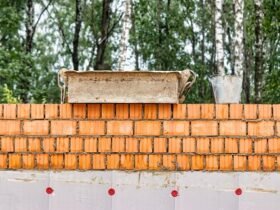Retaining walls play a crucial role in transforming steep, sloped gardens into functional and visually appealing landscapes. This comprehensive guide explores the benefits of retaining walls in sloped gardens, terraced garden design principles, plant selection strategies, erosion control techniques, and showcases real-life case studies of successful garden transformations.
Benefits of Retaining Walls in Sloped Gardens
Retaining walls offer a range of advantages that enhance both the practicality and aesthetic appeal of sloped gardens:
- Erosion Control: By stabilizing soil and preventing erosion, retaining walls protect valuable topsoil and maintain the integrity of the garden.
- Usable Space: They create level terraces or platforms that can be used for planting flowers, growing vegetables, installing seating areas, or creating recreational spaces.
- Improved Water Management: Retaining walls help manage water runoff more effectively, reducing soil saturation and erosion during heavy rainfall.
- Enhanced Aesthetics: These walls add structure and definition to the landscape, creating visually appealing tiered gardens that blend harmoniously with the natural slope.
- Increased Property Value: Well-designed and properly constructed retaining walls can enhance the overall curb appeal and market value of a property.
Designing Terraced Gardens with Retaining Walls
Terraced gardens are a practical solution for utilizing the vertical space of sloped landscapes. Here are key design considerations:
- Step-by-Step Construction: Begin with a thorough assessment of the slope’s gradient and soil conditions to determine the number of terraces needed and their dimensions.
- Material Selection: Choose suitable materials such as concrete blocks, natural stone, timber sleepers, or even gabion walls based on durability, aesthetics, and compatibility with the surrounding environment.
- Curved vs. Straight Walls: Curved retaining walls can create a more natural flow and aesthetic appeal, while straight walls may be more suitable for a formal garden design.
- Incorporating Steps and Pathways: Ensure each terrace is accessible with steps or pathways that blend seamlessly with the overall garden design.
Plant Selection for Sloped Gardens with Retaining Walls
Selecting the right plants is essential for ensuring the long-term success and beauty of sloped gardens supported by retaining walls:
- Ground Covers: Low-maintenance ground covers like creeping thyme, moss, or ivy are excellent choices for stabilizing soil on steep slopes.
- Erosion Control Plants: Deep-rooted plants such as shrubs and grasses help anchor soil and prevent erosion, particularly on the steepest sections of the garden.
- Terrace Vegetation: Choose plants that thrive in specific microclimates created by each terrace’s exposure to sunlight, wind, and moisture levels.
- Native and Drought-Tolerant Species: Opt for plants native to your region or those that require minimal watering once established, promoting sustainability and reducing maintenance.
Erosion Control Techniques for Sloped Areas
Managing erosion is critical to maintaining the stability and health of sloped gardens:
- Terracing: Constructing retaining walls in terraced layers slows down water runoff, reduces erosion, and promotes groundwater absorption.
- Mulching: Apply organic mulch, such as wood chips or shredded bark, to retain moisture, stabilize soil temperatures, and prevent surface erosion.
- Geotextiles and Mats: Use erosion control blankets or geotextiles to stabilize soil, facilitate plant growth, and reduce erosion on newly constructed walls.
- Hydroseeding: Hydroseeding involves spraying a mixture of seeds, mulch, and bonding agents onto exposed soil surfaces to establish vegetation quickly and minimize erosion.
Case Studies of Successful Sloped Garden Transformations
Real-life examples illustrate the effectiveness of retaining walls in transforming challenging slopes into beautiful and functional garden spaces:
- Example 1: A suburban backyard with a steep incline was transformed into a series of terraced gardens using modular concrete blocks. Each terrace features a mix of flowering perennials, ornamental grasses, and vegetable beds, maximizing both aesthetic appeal and food production.
- Example 2: A coastal property utilized natural stone retaining walls to create a cascading effect, incorporating drought-tolerant succulents and native coastal plants. The design not only prevents erosion but also complements the natural surroundings.
- Example 3: An urban rooftop garden in a densely populated area features tiered planters and green walls supported by lightweight modular retaining systems. This innovative approach maximizes green space while minimizing structural load and water runoff.
FAQs About Retaining Walls for Sloped Gardens
Retaining walls prevent soil erosion, create usable space for planting and recreation, improve water management, enhance landscape aesthetics, and increase property value.
To design terraced gardens, assess slope conditions, choose appropriate materials, consider plant selections, incorporate steps and pathways, and ensure compliance with local building codes.
Ideal plants include ground covers for erosion control, deep-rooted shrubs for stability, perennials for seasonal interest, and native species for sustainability and low maintenance.
Effective techniques include terracing, mulching, geotextiles, hydroseeding, and strategically planting vegetation to stabilize soil and reduce water runoff.
Retaining walls provide structure and definition, allowing for tiered planting areas, integrating water features or lighting, and creating visual interest with varying textures and colors.
Regular maintenance includes inspecting walls for erosion or structural issues, pruning plants, replenishing mulch, and ensuring proper drainage to sustain healthy growth and prevent soil erosion.
Yes, by using eco-friendly materials, integrating native plants, promoting water conservation, and following erosion control best practices, retaining walls can contribute to sustainable garden design.
Local building codes may dictate wall height, setback requirements, materials, and drainage considerations. Obtain necessary permits and approvals before constructing retaining walls to ensure compliance and safety.
Retaining walls manage water flow, prevent soil erosion, and promote infiltration, effectively distributing water to plants and reducing runoff that can cause erosion and soil loss.
Design multi-level terraces, incorporate functional elements like seating areas or fire pits, choose adaptable plants, and ensure accessibility with steps or pathways to maximize usability and enjoyment of the garden space.
Conclusion
By implementing these strategies and learning from successful case studies, homeowners and landscapers can effectively utilize retaining walls to transform challenging sloped areas into thriving, beautiful gardens that enhance property value and environmental sustainability. Prioritizing proper design, plant selection, erosion control, and maintenance practices ensures that sloped gardens with retaining walls remain vibrant and resilient for years to come.










